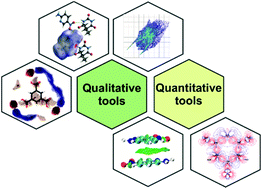Crystal engineering, optical properties and electron density distribution of polar multicomponent materials containing sulfanilamide†
Abstract
Two polar multicomponent materials: sulfanilamide sulfamic acid salt (P21) and sulfanilamide [(4-sulfamoylphenyl)carbamoyl]formic acid salt (Pc) were designed using crystal engineering techniques. A full analysis of the interactions present in both materials was performed by means of topological descriptors of the theoretical electron density. The detailed characterization of S–X (X = O, N, C) bonds by valence shell charge concentration and source function analysis revealed the strongly polarized, almost ‘ionic’ character of S–O interactions. The obtained results show that mutual assembly of crystal building blocks and their packing in both crystal structures is influenced by N–H⋯O hydrogen bonds with an intermediate character between closed and shared shell interactions. Their presence can be associated with hydrogen atom transfer leading to salt formation. Linear (birefringence) and nonlinear optical properties (second harmonic generation) were examined for both materials. The theoretical calculations of χ(2) tensor components and the dispersion of refractive indices revealed that both materials are phase-matchable with second harmonic generation efficiency comparable with commonly used KDP (KH2PO4). One of the materials shows large birefringence (ca. 0.3), which is confirmed by the observation of interference colours strongly dependent upon the sample thickness.



 Please wait while we load your content...
Please wait while we load your content...